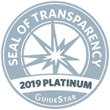BACKGROUND
Thyroid cancer is common, especially in women. Fortunately, many/most of these thyroid cancers are low risk and the prognosis is excellent due to very effective treatments. A variety of studies have shown that thyroid cancer is more common in patients that identify as non- Hispanic Whites and Asian American and/or Pacific Islander (AAPI) as compared to other ethnicities. AAPI patients are a diverse group of people. Despite this, AAPI patients have been grouped together commonly for research and population studies.
This study subdivides AAPI patients into various ethnicities to see if there is a difference in the stage at presentation or treatment responses of thyroid cancer when comparing different ethnicities.
THE FULL ARTICLE TITLE
Zhao HH and Wilhelm SM. Exploring ethnic diversity and clinical outcome variabilities in well-differentiated thyroid cancer among the Asian population. Surgery 2025;177:108827; doi: 10.1016/j.surg.2024.05.049. PMID: 39384480.
SUMMARY OF THE STUDY
In the National Cancer Database, patients who listed their race as Asian American and/or Pacific Islander (AAPI) were analyzed for their thyroid cancer responses to therapy. From 2004 to 2019, patients who were 18 years and older were analyzed. The patient was not included if he/she did not provide their race/ ethnicity. The AAPI patients were subdivided into the following 12 Asian ethnicities: Chinese, Japanese, Filipino, Korean, Vietnamese, Laotian, Hmong, Kampuchean, Thai, Asian Indian, Pakistani, and Pacific Islander. Of the total 364,604 patients, the largest subgroup was Chinese (3851 patients), followed by Filipino (3466) and Korean (1567). Hmong patients was the smallest group with 50 patients.



